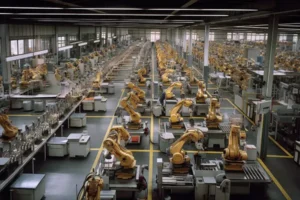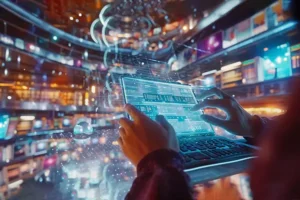The control room hummed with tension as the lead engineer scrolled through yet another inconsistent operator screen. Some alarms flashed red, others blue. Navigation links pointed nowhere. Across two engineering centers, 15 specialists were unknowingly building slightly different versions of the same system.
This wasn’t just another upgrade – it was a high-stakes transformation of an offshore rig’s nervous system. Talos Energy had acquired the aging facility from Shell, and now faced a daunting challenge: migrate 500+ Delta V Operate screens to Delta V Live v15, consolidate 10,000+ OPC tags across three different servers, and retire 10 obsolete PLC-5 controllers – all while keeping the rig operational.
The Perfect Storm of Complexity
What looked like a routine technical migration was fast becoming an operational nightmare:
- The Standards Crisis
Without centralized governance, both engineers on-site and remotely had developed their own interpretations of display standards. Global themes meant to ensure consistency were being ignored in the crunch to meet deadlines. The result? A growing mosaic of incompatible screens that would never pass integrated testing. - The Testing Quagmire
Traditional FAT/SAT procedures required manually writing and executing thousands of test scripts. The testing team was drowning in paperwork, while engineers wasted hours each day fielding questions about tag dependencies and screen relationships. - The Shadow IT Problem
Legacy Kepware and OSI Pi systems contained critical tags that weren’t properly documented. No one could say for certain where all 10,000 tags were being used or what would break if they were modified.
The AI Lifeline
When Bravura AI entered the picture, it didn’t just offer tools – it fundamentally changed how the team worked:
Phase 1: The Great Standardization
Our AI engine began by reverse-engineering the existing screens, identifying dozens of distinct variations in alarm presentation alone. It generated a comprehensive “Deviation Report” that visually mapped every inconsistency against the project standards.
“For the first time, we could see exactly where things were going off the rails,” recalled the lead systems architect. “What used to take weeks of manual review, we got in an afternoon.”
Phase 2: The Dependency Web
The real breakthrough came when we deployed our “Where Used” analysis. By building a complete dependency graph of all 10,000 tags, we could:
- Identify orphaned tags from decommissioned systems
- Flag high-risk modifications that could cascade through multiple screens
- Automatically update cross-references when tags were retired
Phase 3: Testing Transformed
Our digital workers took over the most tedious aspects of validation:
- Auto-generating 85% of FAT test scripts
- Pre-running simulations to predict test outcomes
- Creating audit trails for FAT/SAT compliance
The testing lead marveled: “We went from guessing what might break to knowing exactly where to look. It changed how we approach validation.”
The Ripple Effects
The quantifiable savings were impressive – 60% faster execution, 10% reduction in engineering overhead, not even counting indirect daily inefficiencies – but the real value emerged in unexpected places:
- Risk Mitigation
By catching inconsistencies early, we prevented what would have been a costly rework cycle during integrated testing. - Knowledge Preservation
The AI-generated documentation created an institutional memory that outlasted the project team. - A New Way of Working
Engineers spent less time on clerical work and more on actual engineering. One controls specialist noted: “I finally got to focus on control logic instead of hunting down tag references.”
The Road Ahead
Today, that same team is pioneering our next-generation capabilities:
- AI-assisted design reviews that flag potential issues before build begins
- Self-healing documentation that updates automatically when standards change
- Predictive testing that anticipates failure modes before they occur
As the oil industry faces increasing pressure to do more with less, tools like these aren’t just convenient – they’re becoming existential. The project manager put it best: “We didn’t just upgrade our control system – we upgraded how we work.”
The Takeaway
This story isn’t really about screens or tags. It’s about what happens when human expertise combines with AI precision to solve problems we couldn’t crack before. In an industry where mistakes can cost millions, that combination isn’t just powerful – it’s revolutionary.
The question now isn’t whether to use AI in industrial projects, but how much further we can push this collaboration. One thing’s certain – we’re just getting started.




